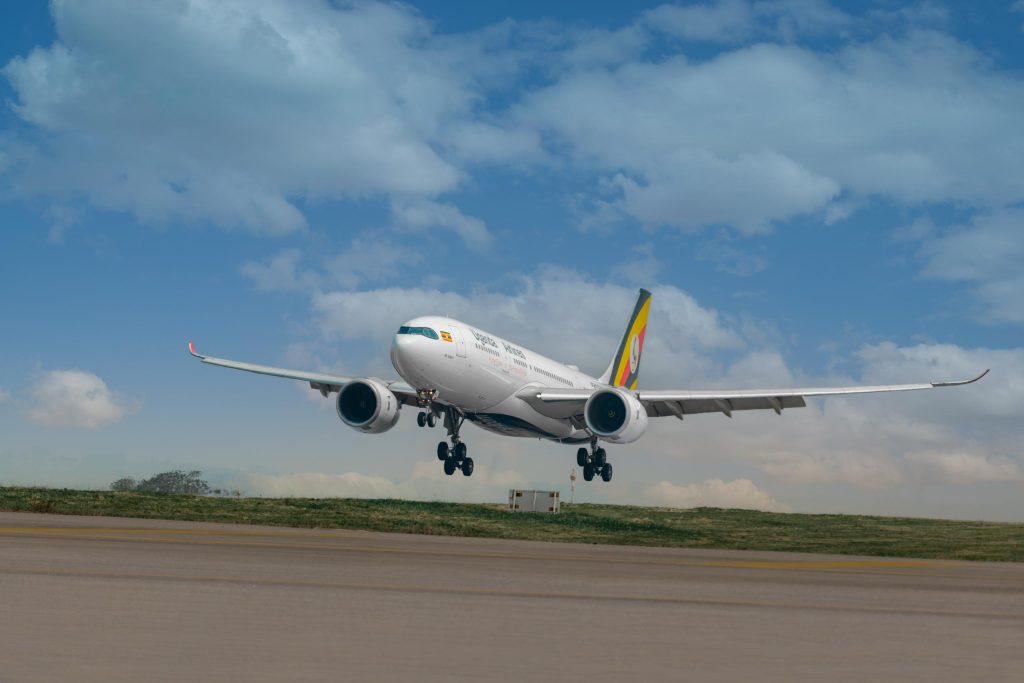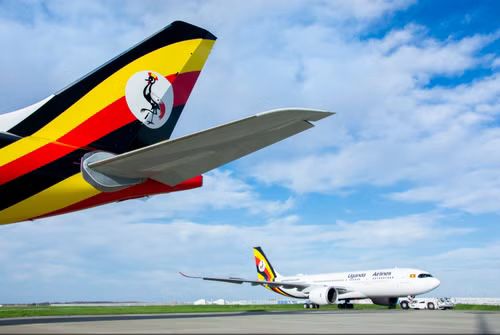By Samuel Ssenono
Africa’s air transport industry is showing strong recovery, according to the June 2025 Global Outlook for Air Transport released by IATA during the world air transport summit in New Delhi India. The report ranks Africa second globally in passenger traffic growth, behind only the Asia-Pacific region.
African airlines recorded a 13.3% increase in revenue passenger kilometres (RPK) in 2024. In the first quarter of 2025, Northern Africa posted the highest growth on the continent at 18% year-on-year, helped by demand from Europe and the Middle East, and improved regional stability.
Africa’s RPK for 2025 is projected to grow by 8.0%, higher than the global average of 5.8%. This is being driven by stronger tourism, trade links, and the expansion of intra-African travel, especially under the African Continental Free Trade Area (AfCFTA).
Passenger Demand and Aircraft Use
Global load factors are expected to average 84% in 2025, with African carriers contributing significantly due to tight aircraft availability and high demand. Routes linking Africa to Europe, the Middle East and Asia continue to see increased frequencies, although growth is being limited by aircraft shortages.
Air Cargo Declines
While passenger numbers are improving, cargo volumes are falling. Africa’s air cargo traffic dropped by 8.9% in the first quarter of 2025, a sharp contrast to the strong performance in 2024. Globally, air cargo is forecast to grow just 0.7% this year, down from 11.3% last year.
The decline is linked to global trade tensions, new tariffs, and the end of certain import exemptions in major markets like the United States. These changes are affecting African exports, especially in time-sensitive goods like flowers and fresh produce.

Aircraft Supply Issues
Aircraft deliveries remain well below pre-pandemic levels. Manufacturers are behind by around 30%, and more than 17,000 aircraft are on order globally. IATA estimates a shortage of over 5,000 aircraft, which is affecting all regions, particularly Africa, where smaller airlines often rely on leased or older aircraft.
Uganda Airlines, for example, recently launched its Entebbe to London route, but long-haul operations like these require reliable access to well-maintained aircraft and support services.
Sustainable Aviation: The Next Hurdle
Sustainability continues to rise on the global aviation agenda, but Africa faces unique barriers to keeping pace.
Globally, airlines are under pressure to meet net-zero emissions targets by 2050. This includes scaling up the use of Sustainable Aviation Fuel (SAF), upgrading to more fuel-efficient aircraft, and adopting carbon offset programs. While SAF use is increasing, supply remains limited and expensive. IATA projects that SAF will account for just 0.5% of global fuel consumption in 2025 well below the pace needed to meet climate targets.
In Africa, uptake of SAF is still minimal. Few African countries have the infrastructure or regulatory frameworks needed to support SAF production or distribution. Aircraft fleet age is also a factor many African airlines continue to operate older models, which consume more fuel and emit more CO₂.
Still, some national carriers are starting to address the challenge. Initiatives include gradual fleet renewal, route optimization to cut emissions, and participation in global carbon offset programs like CORSIA. However, access to financing and policy support will be critical if African airlines are to align with global sustainability goals.

Industry Outlook
Despite the slowdown in cargo and economic uncertainty, IATA expects the global airline industry to post a combined profit of $36 billion in 2025. Passenger numbers are forecast to reach 4.99 billion worldwide.
Growth across regions is uneven. Asia-Pacific leads with a projected 9% growth in RPK, followed by Africa at 8%. Europe, Latin America, and the Middle East are each expected to grow between 5% and 6%. North America is forecast to grow just 0.4% this year.
Challenges Ahead
Africa’s main challenges include limited infrastructure, aircraft availability, high operating costs, and the rising demand for sustainability in aviation. Industry leaders are calling for more investment in airports, better coordination between governments, and reforms to reduce the cost of operations.
There are also growing concerns about protectionism, global fuel price volatility, and the lack of skilled aviation workers.























